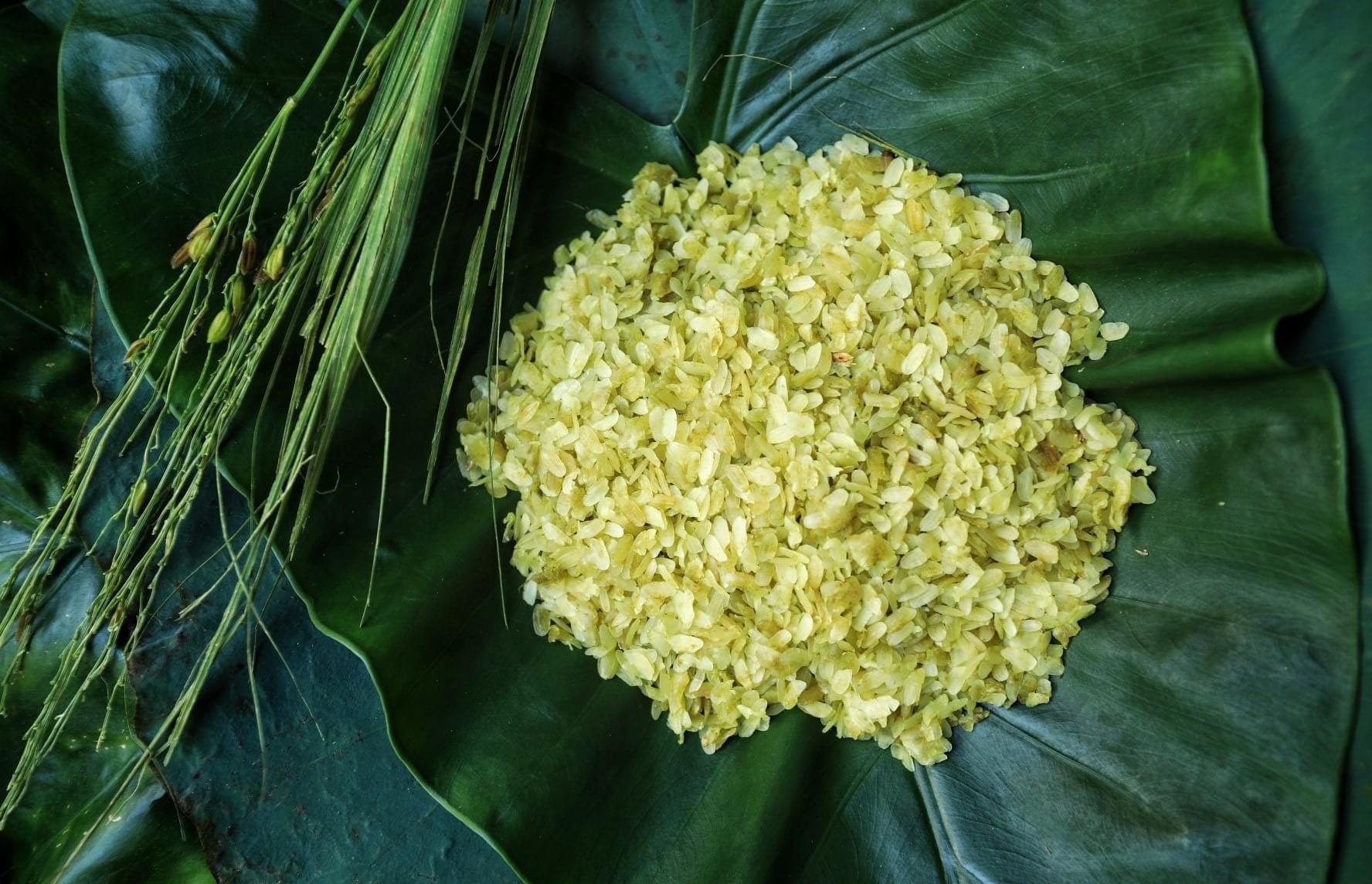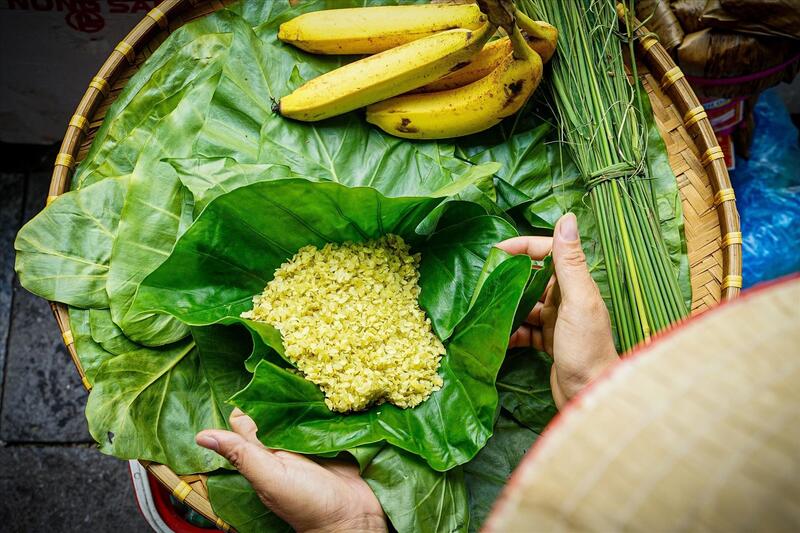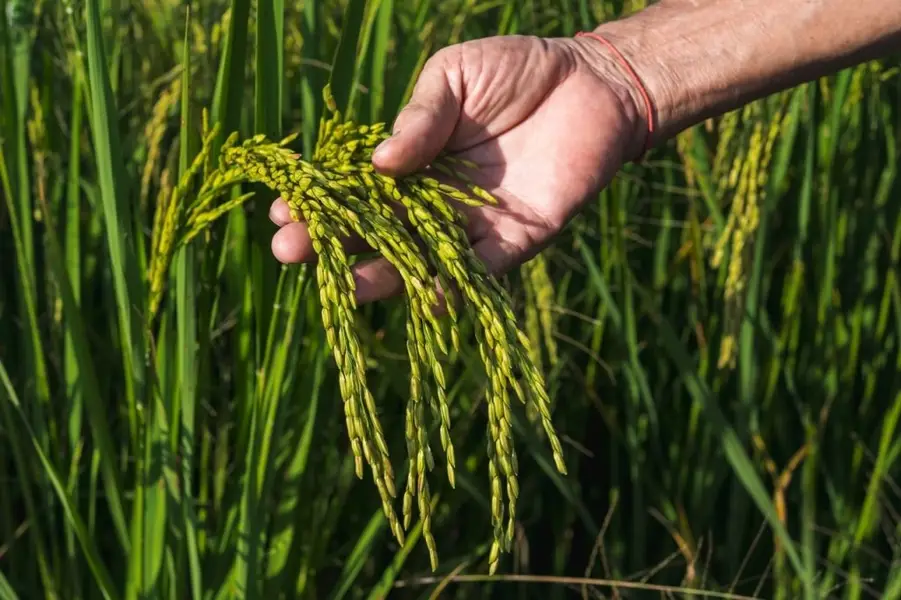Cốm: Autumn Flavor of Hanoi Vietnam
Every autumn, when the cool breeze sweeps across the streets of Hanoi, locals and visitors alike are reminded of Cốm, or green rice flakes. This seasonal delicacy is more than just a snack; it is a cultural symbol deeply woven into the identity of Vietnam’s capital. Wrapped carefully in lotus leaves, cốm carries a unique fragrance and freshness that makes it unforgettable. For many, tasting cốm is like embracing the gentle soul of Hanoi in its most poetic season.
The story of Cốm
Cốm has an ancient origin, closely associated with Vòng Village in Hanoi. Legend tells that during a year of heavy floods, the villagers roasted young rice to preserve their crops, accidentally creating the first batches of cốm. Over time, this humble solution turned into a beloved specialty. Vòng Village soon became famous for producing the finest cốm, and its reputation has lasted for centuries. Today, cốm is considered not only a traditional snack but also an art form, reflecting the care, patience, and skill of generations of Vietnamese farmers and artisans.

How to Eat Cốm
Traditionally, people enjoy cốm plain, savoring its natural sweetness and chewy texture. To enhance the flavor, many pair it with ripe bananas, creating a perfect balance between the richness of the fruit and the subtlety of the green rice. In Hanoi, cốm is also used as a key ingredient in many signature dishes such as bánh cốm (green rice cake filled with mung bean and coconut), chả cốm (Vietnamese grilled pork with green rice), or xôi cốm (sticky rice with green rice flakes). Each dish showcases a different aspect of cốm, turning it into a versatile ingredient that is both rustic and refined.

The Meaning of Cốm
Cốm is more than food; it represents the spirit of Vietnamese culture. Its green color symbolizes freshness and purity, while the delicate taste reminds people of the countryside’s simplicity and warmth. For many Vietnamese families, cốm is a gift of love, often given as a token of gratitude and respect. During festivals and important occasions, cốm is offered on ancestral altars, serving as a bridge between generations. Its seasonal nature also makes it a reminder of the passing of time, urging people to cherish fleeting yet beautiful moments in life.
Cốm and Hanoi – An Unbreakable Bond
When talking about Hanoi in autumn, it is impossible not to mention cốm. Walking through the streets of the Old Quarter, you may come across vendors carrying baskets of cốm wrapped in fresh lotus leaves. The sight itself is enough to evoke nostalgia among locals and fascination among tourists. For visitors, tasting cốm is one of the most authentic ways to connect with Hanoi’s traditions. Alongside famous dishes like phở and bún chả, cốm is a culinary ambassador that introduces the city’s elegance and cultural depth to the world.

Today, Hanoi continues to celebrate cốm through festivals, tours, and culinary experiences. Travelers often bring home bánh cốm as a souvenir, a sweet reminder of their time in the capital. Whether you are enjoying cốm on a quiet street corner or tasting it during a family meal, the experience reflects the very essence of Hanoi: gentle, poetic, and timeless.

Cốm & Vietnamese culture
Cốm is not just a seasonal treat; it is a cultural treasure that embodies the beauty of Vietnamese tradition. From its humble origin in Vòng Village to its strong connection with Hanoi, cốm has become an irreplaceable symbol of autumn. To savor cốm is to immerse yourself in the rhythm of Hanoi’s life, where every grain of green rice tells a story of love, heritage, and the city’s poetic charm.
For travelers planning a trip to Vietnam, especially to Hanoi, trying cốm is a must. It is more than food, it is an experience that will stay with you long after the season has passed.
